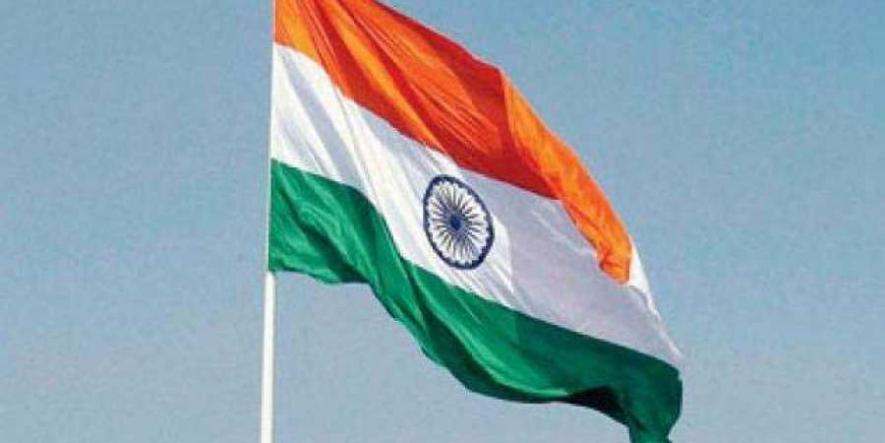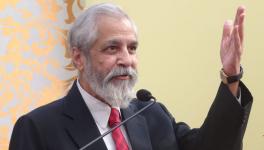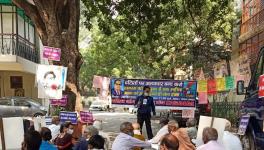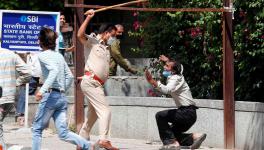How to Make India Ungovernable

Image for representational use only.Image Courtesy : The Indian Express
Former Supreme Court justice Markandey Katju recently wrote that the current economic, social and political conditions in India resemble pre-Revolution France. “I have been saying since long that some kind of event similar to the French Revolution was coming in India, but I was mocked at, not taken seriously, and depicted as the boy who cried “wolf”. Well, the wolf is staring you at your doorstep now...” he wrote.
Certainly there is anxiety in contemporary India, and a sense of uncertainty about political and economic developments. Every sensible citizen is haunted by the worsening economic conditions, the collapsing job market in particular and discernible crumbling of institutions and governance in general.
All of this is unfolding alongside the growing numbers of an aspirational young population, which is still in the process of formulating its political opinions. This younger generation is the product of a post-Soviet era, post-Cold War political order in which the market is an all-around Truth. Such conditions can have many probable outcomes, and each would leave a long-lasting impression on the new Indian generation. This is why the one big question my students keep asking me, inside and out of the classroom is, ‘what will happen next?’
In my response to them, I beg to differ from justice Katju.
Two probable scenarios arise from today’s socio-political conditions, if indeed one expects them to leave a major structural change in their wake. The first scenario would be of a revolution, like the one France had, as justice Katju has ‘predicted’. The second scenario is of a “color revolution”, the sort the Middle East and Eastern Europe have witnessed.
But India does not appear amenable to any major structural change.
There are two reasons for this. First, that India has a very strong foundation of electoral democracy. People have deep faith in the electoral system irrespective of all its ills, and it appears that this confidence will remain. In a survey conducted by students of this university’s Centre for Political Studies, a majority of respondents said that they believe it to be their civic duty to participate in elections and vote. No political actor in India is in a position to disregard this strong political feeling.
The second factor that minimises the possibility of radical change is the presence of domestic and global market actors. They have huge stakes in maintaining a stable political and economic regime, and given the current regime’s establishment’s pro-corporate policies, they would want the status quo even at the cost of people’s well-being.
Global economic conditions also make it difficult for market actors to risk losing the Indian market.
Be it France, Russia or East Europe, when structural changes took place in them, two conditions—electoral democracy and global market players—were absent in them. When there were stirrings of revolution, market players did exist, but were not as organised, nor as globally connected, as they are in today’s India.
On the other hand, the colour revolutions raised demands for a liberal electoral democratic order. India already has such a political system in place, despite the large number of issues with its electoral democracy.
Besides, these countries either had a history of Communist rule or an authoritarian leader, and these played a major role in the prodding them on towards ‘revolutions’. The prevailing Indian conditions as well as its historical conditions are qualitatively distinct. Hence, even this kind of scenario is less likely to occur.
Instead, a third political scenario is in the making in India.
The political conditions are moving more in the direction of poor law-and-order—anarchy, in other words—and not any form of large-scale structural change. There are two explanations for this: First, the worsening social conditions, which can be considered an indicator of the gradual destruction of an existing social order. Second, a political chaos is emerging which is destructive of the constitutional-institutional order. This has come coupled with the absence of an alternative political idea and organised Opposition.
The conditions in India today are not only poor in terms of the economy but even a social crisis is in the making. The crime rates recently released by the National Crime Records Bureau are indicative of this trend. The data shows a growing rate of certain kinds of crimes.
For example, 33,0754 violent crimes were reported in 2014 across India. In three years, this jumped by 30% to 42,6825 in 2017. Similarly, 20% more kidnapping and abduction cases were registered in 2017 than in 2014 (up from 77,237 to 95,893). Crimes against women, senior citizens, children and cyber-crimes also suddenly leaped over the last five years.
In 2014, around 33,7900 crimes against women were reported, which crossed 35,9840 in 2017. Crimes against children rose 30%, from 89,423 to 1,29,032 cases, over the same period. Crimes against senior citizens grew from 20,532 cases in 2015 to 22,727 in 2017. Cyber crimes grew the fastest, from 5693 in 2013 to five times that—21,796 in 2017.
This data does not only show the growing incidence of crimes in the country, but also reveal a change in their nature.
Harsh economic conditions, lack of opportunities for work and, above all, steady communalisation and polarisation of both public spaces and inter-community relations, are the root cause of these changes.
For instance, earlier, mega-cities were the epicenter of crime. Now it is the small towns and emerging cities, such as Hyderabad, Jodhpur and Lucknow where the crime graph is zooming. In mega-cities, the strong presence of the state, better technology and, most of all, the presence of large market players, dampens the crime rate, relatively-speaking. Besides, the focus of state policy in mega-cities is to maintain status quo, to ensure safety and security of the state apparatus.
As the peripheries become the new hotbeds for crime, a governability crisis is emerging across the country.
Such conditions are likely to produce a social order dominated by fear, terror and insecurities. Political institutions that are expected to play the role of impartial actors, and supposed to put just and fair procedures to use in such times, have already been delegitimised by the ruling dispensation.
The Constitution-makers and leaders of the freedom struggle had envisaged a federal structure for newly-independent India, to preserve and promote not only cultural distinctiveness but also political and economic diversity across the country. This idea of federalism is under serious threat due to the new governance framework of over-centralisation and homogenisation.
The ruling party is making efforts to destroy any form of opposition to its socio-political and cultural ideology.
Above all, the normative structure of the constitutional order, which includes the values of equality, justice, tolerance, and democracy, is being replaced with an sense of acceptance for inequality and hierarchies; a sense of caste and religious superiority; illiberalism and whataboutery.
The ruling leaders are celebrating inequalities in the name of prosperity. Policies such as the National Register of Citizens are the best example of the state policy to promote mistrust. One cumulative impact of this is the emergence of a sense of confusion in various political groups.
The ascending mistrust in institutions and widening emotional vacuum have gradually penetrated the public psyche. Growing cases of mob lynching and other heinous crimes manifest these circumstances. TV channels, through their propaganda, have contributed to the destructive tendency. In such a setting, people would see ‘Others’ as a “threat to their existence”.
As institutions decline and the lack of a political alternative sets in concrete, and the state remains unwilling to recognise that there is public anguish, India is more likely to end up in what the classical Indian writings call arajakta [lawlessness]. In the European context, it is known as a “Hobbesian state of anarchy”: a situation of lawlessness and everyday chaos, with “everyone feeling fearful from everyone”, finally leading to a governability crisis.
The author teaches at the Centre for Political Studies, JNU. The views are personal.
Get the latest reports & analysis with people's perspective on Protests, movements & deep analytical videos, discussions of the current affairs in your Telegram app. Subscribe to NewsClick's Telegram channel & get Real-Time updates on stories, as they get published on our website.
























